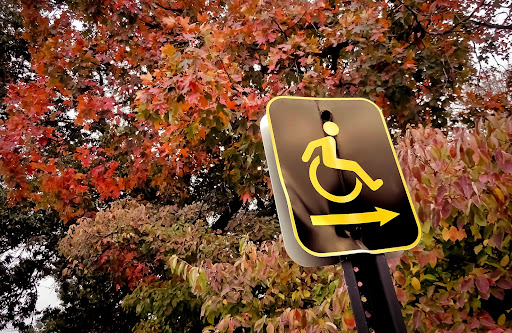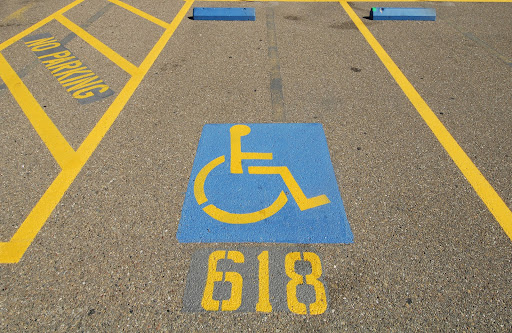
Commercial properties must ensure ADA compliance on pavement, parking lots, and curbs. But what are the guidelines for compliance anyway?
The Americans With Disabilities Act, also known as ADA, is a federal law that protects the civil rights of disabled Americans. It essentially requires almost all public spaces and businesses to provide equal access to those with disabilities.
Common examples include installing ramps, elevators, and sliding doors. It also extends to parking lots, requiring them to set aside spaces specifically for disabled parking.
The ADA applies to nearly all businesses and public spaces. It also applies to government offices, schools, and public transportation. Additionally, this Act is not exclusive to indoor spaces. It covers indoor and outdoor spaces, including sidewalks, curbs, and pavements.
Commercial property owners and businesses should pay close attention to the requirements of the ADA. Often, owners overlook things like curbs, ramps, and parking lots because they are easy to miss. Many owners prefer to focus on the appearance and accessibility of the building’s interior, leaving the exterior in disrepair.
Neglect can quickly get a business owner in trouble. Even if you don’t harbor any ill intentions, you may find yourself slapped with a hefty fine or sanction if you fail to comply with ADA guidelines. And while you might think you can get away with it by flying under the radar, customers can easily lodge complaints against your commercial establishment, earning you the attention of the federal or local government.
The Americans With Disabilities Act is a comprehensive piece of legislation that goes beyond accessibility requirements. That being said, not all of these requirements apply to pavements, parking lots, curbs, and ramps. In that respect, here are some of the guidelines you must keep in mind.

Parking lots are not just for the able-bodied. Disabled Americans must also have access to parking spaces. But, when these spaces do not comply with ADA regulations, they can hinder those with disabilities.
Commercial properties should ensure that their parking lots and spaces are easily accessible by everyone, disabled Americans included. This is something all owners should do not just to remain in compliance with the ADA but also to maintain their peace of mind.
As per ADA requirements, parking lots should follow certain design rules. Disabled parking spaces should be accessible through the shortest route from the entrance. They must also have accessible aisles, designated areas for those requiring wheelchairs, and other mobility devices to move around. You must mark these accessible aisles clearly, and they must remain level and at the same length as the space.
There are also requirements when it comes to the measurement of parking spaces for both cars and vans. All of these requirements, though, dictate that the surfaces must be “firm, stable, and slip-resistant.” Moreover, the accessible aisle must remain level with the rest of the accessible parking space. As such, these parking spaces should not have severe damage, such as potholes and large gaps.
Additionally, it is imperative to clearly strip parking lots, particularly accessible parking spots, to remain in ADA compliance. And while you can attempt to do this yourself, professional parking lot striping services offer more benefits. Professionals can work with you on the layout or design of the lot as well as perform lot striping in an efficient manner.
Commercial properties usually have sidewalks in front of entrances. And these sidewalks normally come with curbs. Because curbs are raised, people with disabilities often can’t access them easily.
The ADA requires that sidewalks have ramps to allow disabled people to get up the curb easily. Curb ramps, though, can get damaged over time. Cracks and chips can grow to become potholes. And, when there are potholes on curb ramps, disabled people can’t use them.
Wheelchairs would have difficulty crossing the ramp without getting caught in the hole. People using canes or walking sticks will have to maneuver around the gap.
While the ADA compels commercial establishments to make adjustments and maintain those adjustments for disabled people, ensuring your property is free from potholes and other damage is beneficial all around. It is not limited to people with disabilities.
Potholes are a common cause of personal injury and vehicle damage. Pedestrians, able-bodied or otherwise, can trip over potholes and hurt themselves. Vehicles can run over potholes, causing damage to the suspension and other components.
As a commercial property owner, you are responsible for providing a safe space for your customers, tenants, and employees. It is the right thing to do from a moral standpoint, but it also allows you to protect yourself from potential liability. People can sue you for damage or personal injury due to neglect. And that’s on top of the possible penalties you face for non-compliance with ADA regulations.
Commercial properties and businesses must adhere to the requirements of the Americans With Disabilities Act. Adherence to parking lots and sidewalks involves proper striping, accessibility, and maintenance. But, not all owners have the resources to remain in ADA compliance on pavement, parking lots, and curb ramps. In that case, hiring a professional service is the way to go.
RELATED ARTICLES: